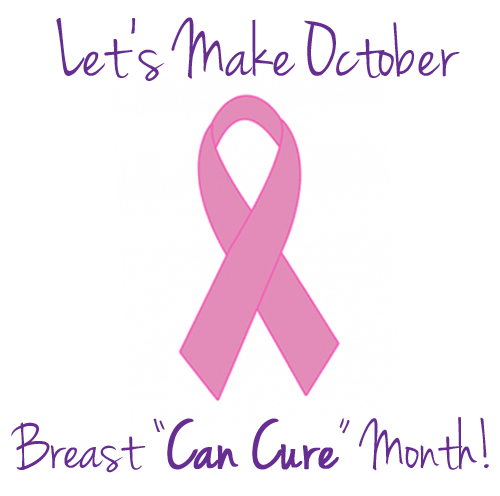This blog post comes from my aunt Sharon, who is a breast cancer survivor. In addition, Sharon is an author and a major proponent of positive thinking. October is breast cancer awareness month, and as breast cancer is the most diagnosed cancer in women, many of us have been affected by the disease. In this post, Sharon asks how positive thinking may affect our perception of cancer. -A.M.
Whenever I see the word cancer, my fight-or-flight response kicks into high gear. And now that it’s October, I’ll be seeing the word everywhere for an entire month. All of us will. Awareness is good, but . . . is it possible we’re compromising our good intentions by concentrating so much of our attention on the word “cancer”? What would happen if we made one small change to the name of this month’s campaign?

I applaud Breast Cancer Awareness Month and all the good it accomplishes. Indeed, as a breast cancer survivor I encourage participation in the month-long event. However, I am also a strong believer in the remarkable power of words and of positive thought. Hence, my suspicion that if we were to write or simply imagine one word in that campaign in a slightly different way we could have a more positive impact on personal lives and the greater community.
One of the most effective pycho/physical aids in battling breast cancer is the power of visualization. So rather than concentrating our awareness for an entire month on cancer—a word so feared and detested—why not direct our attention instead on can cure?

Books like Rhonda Byrne’s popular “The Secret,” developmental biologist Dr. Bruce Lipton’s “The Biology of Belief,” and neuroscientist/pharmacologist Dr. Candace Pert’s “Molecules of Emotion,” point out the very real chemical and physiological effects that beliefs and emotions have on the body. The subconscious doesn’t know the difference between real and imagined, so the bodily effects of continually wishing, worrying, dreaming, fearing about or focusing on something that might happen is often the same as if it is happening. And when the constraints of time and space are removed (which appears to be possible according to quantum physics experiments), the mind can attract—or even create—those very things it repeatedly imagines. So choose carefully those things you set your mind on!
 When Charlotte McGary and I wrote “The Dream Crystals of Gandara,” we purposefully chose to avoid the darker elements of science fiction and fantasy, such as horror and dystopian hopelessness. When you’re lost in the dream-like world of reading—one of my favorite places to be!—your mind is at its most creative as well as its most impressionable and vulnerable. When you’re floating in that trance-like state, you open yourself to powerful positive and negative messages that could affect your mind as strongly as hypnotic suggestions. While “Dream Crystals” is filled with battles between good and evil, Charlotte and I nevertheless tried our best to ensure that the messages conveyed in our book were ultimately uplifting ones.
When Charlotte McGary and I wrote “The Dream Crystals of Gandara,” we purposefully chose to avoid the darker elements of science fiction and fantasy, such as horror and dystopian hopelessness. When you’re lost in the dream-like world of reading—one of my favorite places to be!—your mind is at its most creative as well as its most impressionable and vulnerable. When you’re floating in that trance-like state, you open yourself to powerful positive and negative messages that could affect your mind as strongly as hypnotic suggestions. While “Dream Crystals” is filled with battles between good and evil, Charlotte and I nevertheless tried our best to ensure that the messages conveyed in our book were ultimately uplifting ones.
Now, I don’t know about you, but whenever I see the word cancer—especially breast cancer—my level of anxiety immediately jumps because I can’t help but subconsciously associate it with negative experiences even if I’m positively combating it through healthy living and good works. If I spend an entire month looking at the words breast cancer . . . well, you get the picture.
So this October, let’s spend every day repeating the words “can cure” and visualizing healthy tissue, happy breasts, and the joy of discovering amazing cures. And from now on, let’s dedicate every month to “breast can cure awareness”!




